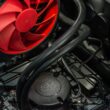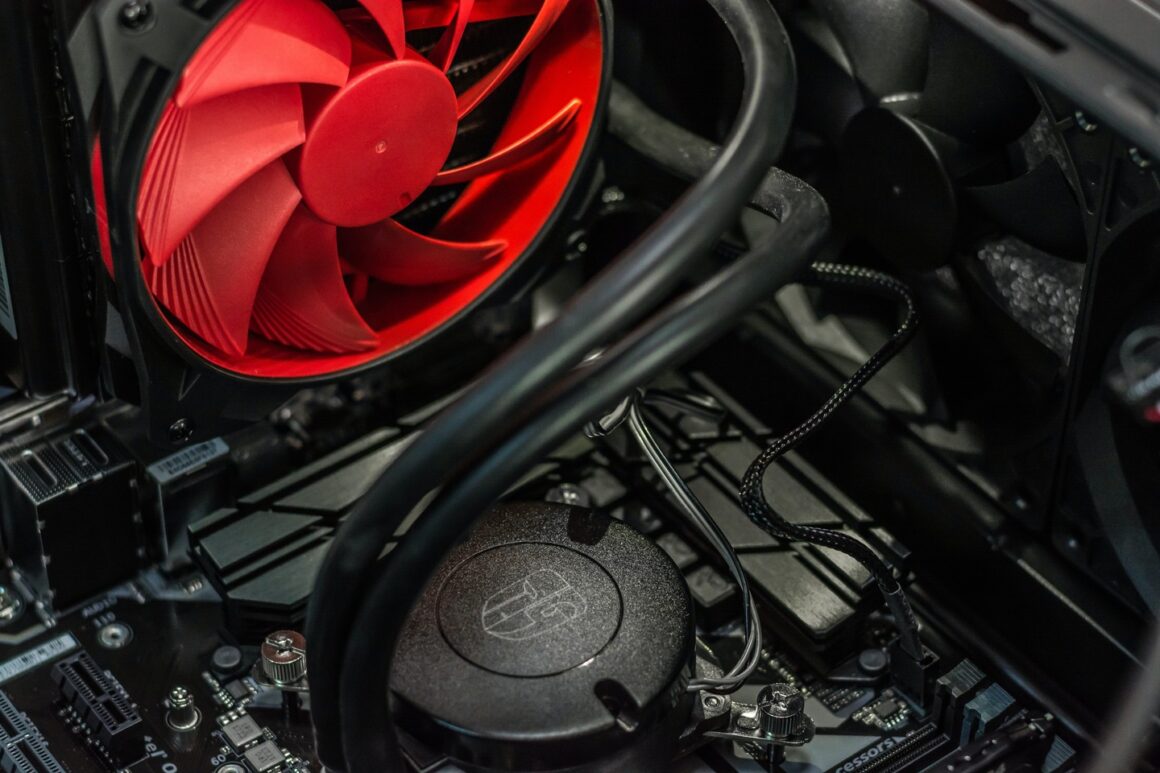Introduction
In the digital age, computers have become an indispensable part of our daily lives, whether for work, entertainment, or personal communication. However, one common challenge that often goes unnoticed until it’s too late is computer overheating. This issue is not just a minor inconvenience; it can significantly affect the performance and lifespan of your device.
Overheating in computers can occur for a variety of reasons, from excessive dust accumulation to hardware malfunctions. When a computer overheats, it doesn’t just slow down or become uncomfortable to touch; it can also lead to more serious consequences like system crashes, hardware damage, and in extreme cases, data loss. Therefore, understanding the causes, symptoms, and solutions for overheating is crucial for anyone relying on their computer for important tasks.
Addressing computer overheating is essential not only for maintaining optimal performance but also for ensuring the longevity of your device. Ignoring these signs of distress in your computer can lead to more costly repairs or replacements in the future. In this guide, we will delve into the various aspects of computer overheating, providing you with a comprehensive understanding of how to prevent and fix this prevalent issue. From simple maintenance tips to advanced cooling solutions, this guide will equip you with the knowledge to keep your computer running efficiently and effectively, safeguarding your digital life.
Section 1: Understanding Computer Overheating
1.1: Causes of Overheating in Computers
1. Hardware Issues
- CPU and GPU Stress: The Central Processing Unit (CPU) and Graphics Processing Unit (GPU) are the workhorses of your computer. When running intensive tasks like high-resolution video editing or gaming, these components work harder, generating more heat. If the cooling system isn’t efficient enough, this heat can lead to overheating.
- Poor Thermal Management: Sometimes, the issue lies in the thermal paste, which acts as a heat conductor between the CPU and its cooler. Over time, this paste can dry out and become less effective, leading to increased temperatures.
- Aging Components: Older computers may have components that are less efficient at managing heat, contributing to overheating issues.
2. Environmental Factors
- Inadequate Ventilation: Computers need good airflow to maintain optimal temperatures. If your computer is placed in an area with poor ventilation, such as a cramped bookshelf or a dusty corner, it’s more likely to overheat.
- Ambient Temperature: The room temperature can also impact your computer. A hot environment can make it difficult for your computer to cool down effectively.
1.2: Symptoms of an Overheating Computer
1. Slow Performance
- Throttling: When a computer overheats, it may start throttling its performance to reduce heat generation. This results in noticeably slower operations, particularly during tasks that would usually be smooth.
2. Crashes and Shutdowns
- System Instability: Excessive heat can cause your computer to become unstable, leading to unexpected crashes or even sudden shutdowns. This is a protective measure to prevent damage to the internal components.
3. Physical Signs
- Hot to the Touch: One of the most obvious signs of an overheating computer is excessive heat on the case, especially around the ventilation areas.
- Fan Noise: If your computer’s cooling fans are constantly running at high speeds, it could be a sign that they are struggling to keep the system cool. This often accompanies an increase in noise as the fans work harder to reduce temperatures.
Understanding these causes and symptoms of computer overheating is the first step in diagnosing and solving the issue. By keeping an eye out for these indicators, you can take proactive measures to protect your computer from the damaging effects of excessive heat.
Section 2: Preventive Measures for Computer Overheating
2.1: Regular Maintenance and Cleaning
One of the most effective ways to prevent computer overheating is through regular maintenance and cleaning. Over time, dust and debris accumulate inside the computer, clogging fans and air vents. This accumulation not only impedes airflow but can also insulate heat within the device, exacerbating overheating issues.
Dust Removal: Regularly cleaning the internal components of your computer, such as the fans and heatsinks, is crucial. This can be done using compressed air cans to blow out dust from hard-to-reach areas. For desktop computers, opening the case for a thorough cleaning is recommended, while laptops might require professional service for a deep clean.
Ensuring Proper Ventilation: The placement of your computer significantly affects its ability to dissipate heat. Ensure that there’s ample space around your device, particularly around the vents, to facilitate good airflow. Avoid placing your laptop on soft surfaces like beds or couches, which can block air intake and exhaust ports.
2.2: Optimizing Computer Settings
Beyond physical maintenance, you can also take measures to reduce overheating through software optimizations.
Adjusting Power Settings: Most computers have power management settings that can be adjusted to balance performance and heat generation. For instance, setting your computer to a ‘Balanced’ or ‘Power Saver’ mode can reduce the operational intensity of the CPU and GPU, thereby generating less heat. This is particularly useful for tasks that do not require high processing power.
Software Solutions for Temperature Monitoring and Management:
- Temperature Monitoring Tools: Software like HWMonitor or SpeedFan can provide real-time temperature readings of various components. By monitoring these temperatures, you can identify if and when your computer is getting too hot.
- Fan Speed Control Software: Applications such as MSI Afterburner or ASUS GPU Tweak allow users to manually control the fan speeds on their computers, providing a more tailored cooling response based on the temperature readings.
- Background Processes Management: Certain applications can cause your CPU or GPU to work harder, leading to increased heat. Using task manager tools to monitor and close unnecessary background processes can help in managing the computer’s temperature.
By combining regular physical maintenance with smart software management, you can significantly reduce the risk of your computer overheating. These preventative measures not only prolong the life of your device but also ensure optimal performance during use.
Section 3: Cooling Solutions for Overheating Laptops and PCs
3.1: Cooling Hardware
When preventive measures aren’t enough, additional cooling hardware can be a game-changer in managing computer overheating. This hardware is designed to enhance the existing cooling mechanisms of your device, ensuring better heat dissipation.
Cooling Pads: Particularly useful for laptops, cooling pads provide extra fans that help in pulling heat away from the device. They are easy to use, portable, and come in various designs that cater to different laptop sizes and cooling requirements.
External Fans: For desktop computers, external fans can be a great addition. These fans can be attached to the case or positioned to direct cooler air towards the heat-generating components. Some high-performance external fans are specifically designed for gaming PCs, which tend to generate more heat.
Heat Sinks: A heat sink is a component that sits directly on top of heat-generating parts like the CPU and GPU. It absorbs heat and dissipates it away from the component, often assisted by fans. Upgrading the stock heat sink that comes with your CPU to a larger, more efficient one can significantly reduce overheating issues.
3.2: DIY Cooling Techniques
For those who prefer a more hands-on approach, there are several DIY techniques that can help in cooling your computer.
Improving Case Airflow: For desktops, rearranging the internal components or modifying the case to improve airflow can be effective. This might involve adding more ventilation holes or repositioning internal fans for optimal air movement.
Homemade Laptop Stands: Elevating your laptop can significantly improve air circulation. A simple DIY stand can be made using common household items, ensuring that the laptop’s vents are not obstructed and air can flow freely around the device.
Ambient Cooling: Sometimes the simplest solution is to adjust the room temperature. Using an air conditioner or a room fan to lower the ambient temperature can help in keeping your computer cool.
Thermal Paste Application: Reapplying thermal paste to the CPU and GPU can improve heat transfer from these components to their coolers. This is a bit more technical and might require some research or professional help, but it can have a substantial impact on reducing overheating.
By employing these cooling solutions, either through additional hardware or DIY methods, you can effectively manage the temperature of your computer, ensuring stable performance and prolonging its lifespan.
Section 4: Overheating in Specific Scenarios
4.1: Dealing with Laptop Overheating While Gaming
Gaming laptops, with their high-performance components, are particularly susceptible to overheating due to the intense demands of modern games. Effective heat management is crucial in these scenarios to ensure both optimal gaming performance and the longevity of your device.
Special Cooling Solutions for Gaming Laptops:
- Dedicated Gaming Cooling Pads: These are designed to handle the intense heat generated by gaming laptops. They often have multiple fans and robust cooling mechanisms.
- External GPU Enclosures: For laptops, using an external GPU can offload some of the intensive processing tasks from the laptop, thereby reducing heat generation.
- Regular Breaks: Giving your laptop a break during extended gaming sessions can prevent it from overheating and maintain performance.
Settings and Software Optimizations:
- Graphics Settings: Adjusting the in-game graphics settings to a lower level can significantly reduce the strain on the GPU, thus lowering heat generation.
- Overclocking Management: While overclocking can boost performance, it also increases heat. Using overclocking judiciously or opting for automatic overclocking solutions that manage heat can be beneficial.
4.2: High-Performance Computing and Overheating
High-performance computing tasks like programming, 3D rendering, and video editing can push your computer to its limits, leading to overheating. Here are some solutions to handle this:
Enhanced Cooling Systems:
- Liquid Cooling: For desktops involved in high-demand tasks, liquid cooling systems can be more effective than traditional air cooling. They are especially useful for sustained heavy processing.
- Upgraded Internal Fans: Installing higher-quality or additional fans in your computer can help in dissipating heat more efficiently during intensive tasks.
Optimizing Computer Usage:
- Task Scheduling: Running high-demand tasks during cooler times of the day or in intervals can help in managing heat accumulation.
- Resource Allocation: Using software tools to monitor and manage resource allocation, ensuring that no single process overwhelms the system.
Workspace Environment:
- Room Temperature Control: Maintaining a cool ambient temperature in your workspace can contribute significantly to reducing computer overheating.
- Adequate Ventilation: Ensuring that your workspace has good airflow can help dissipate heat from your computer.
By addressing the unique challenges of overheating in gaming laptops and computers used for high-performance tasks, you can maintain a balance between achieving top performance and keeping your device cool and functional. These specialized strategies are essential for anyone pushing their computers to the edge of their capabilities.
Section 5: Troubleshooting and Repair
5.1: Step-by-Step Troubleshooting Guide
When you encounter overheating issues with your computer, a systematic approach to troubleshooting can help identify the root cause. Here’s a step-by-step guide to diagnosing and addressing overheating problems:
Step 1: Check for Obvious Signs of Dust and Blockage
- Examine the air vents and cooling fan areas for any dust accumulation or blockage. If you find dust, carefully clean these areas using compressed air or a soft brush.
Step 2: Monitor the Temperature
- Use software tools like HWMonitor or SpeedFan to keep an eye on the temperature of your CPU, GPU, and other critical components.
Step 3: Test the Fans
- Check if all internal and external fans are functioning correctly. Listen for unusual fan noises which can indicate a malfunction.
Step 4: Evaluate Environmental Factors
- Consider the room temperature and ventilation. Make sure your computer is placed in a well-ventilated area and not near heat sources.
Step 5: Check for Software Issues
- Look for processes that are consuming high CPU or GPU usage. Sometimes, a specific application or process can cause overheating.
Step 6: Inspect Internal Hardware
- For desktops, open the case and inspect the internal components. Look for signs of damage or wear, especially on the heat sink and cooling fan.
Step 7: Apply Thermal Paste
- If the CPU or GPU thermal paste is old or poorly applied, consider reapplying it. This process can be delicate, so proceed with caution or seek professional help.
5.2: When to Seek Professional Help
While many overheating issues can be resolved with DIY methods, there are situations where professional assistance is necessary:
Persistent Overheating Despite Cleaning and Maintenance
- If your computer continues to overheat despite thorough cleaning and proper environmental conditions, it may indicate a deeper hardware issue.
After Upgrading or Replacing Components
- If overheating starts after you’ve upgraded or replaced components like the CPU, GPU, or power supply, it could be due to compatibility issues or improper installation.
Physical Damage to Components
- If you notice any physical damage, like a cracked motherboard or leaking capacitors, it’s time to consult a professional.
Complex Repairs
- Tasks like soldering, dealing with liquid cooling systems, or replacing embedded laptop components are best left to experts.
Warranty Considerations
- If your computer is still under warranty, it’s advisable to contact the manufacturer or authorized repair center rather than attempting repairs yourself.
Recognizing when to seek professional help is crucial. Not only does it prevent further damage to your computer, but it also ensures that complex issues are handled safely and effectively. Remember, timely intervention by a professional can save you time and money in the long run.
Conclusion
As we wrap up this comprehensive guide on dealing with computer overheating, let’s recap the key points we’ve discussed:
- Understanding Overheating: Recognizing the causes and symptoms of computer overheating is crucial. Whether it’s hardware-related issues like CPU and GPU stress or environmental factors such as inadequate ventilation, being aware of these elements can help you prevent potential problems.
- Preventive Measures: Regular maintenance, such as dust removal and ensuring proper ventilation, plays a significant role in preventing overheating. Additionally, optimizing computer settings, including adjusting power settings and utilizing software for temperature monitoring, can contribute greatly to maintaining a healthy computer temperature.
- Cooling Solutions: For more persistent overheating issues, consider investing in cooling hardware like cooling pads, external fans, and upgraded heat sinks. DIY cooling techniques, including improving case airflow and ambient cooling, can also be effective.
- Special Scenarios: Addressing overheating in specific scenarios like gaming laptops or during high-performance computing tasks requires specialized strategies, such as using dedicated gaming cooling pads or liquid cooling systems.
- Troubleshooting and Repair: A step-by-step approach to troubleshooting can help identify overheating causes. However, recognizing when to seek professional help is vital, especially when issues persist or involve complex repairs.
In conclusion, actively managing and monitoring your computer’s temperature is not just about immediate performance benefits; it’s about investing in the longevity and reliability of your device. Regular checks, timely maintenance, and being proactive in cooling solutions can go a long way in keeping your computer in optimal condition. Remember, a cool computer is a happy computer, and taking these steps will ensure that your device continues to serve you well without the headaches of unexpected shutdowns or performance issues. Stay cool and compute on!




